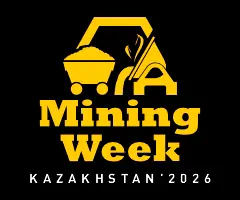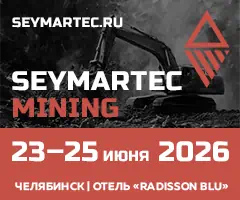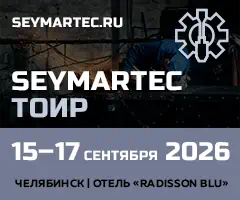Smart prediction of ground displacement using parallel neural network models and high-precision geodetic measurements
 N.L. Krasyukova, O.V. Panina, S.G. Eremin, A.V. Zubenko, A.M. Laffakh
N.L. Krasyukova, O.V. Panina, S.G. Eremin, A.V. Zubenko, A.M. Laffakh
Financial University under the Government of the Russian Federation, Moscow, Russian Federation
Russian Mining Industry №2 / 2025 p.106-112
Abstract: The goal of this research was to investigate the possibilities of using parallel neural network models in combination with high-precision geodetic measurements to predict ground displacement. The relevance of this task is defined by the growing need for effective methods to ensure safety and reduce risks associated with the operation of engineering facilities. A methodology for smart prediction has been developed within the framework of the research, based on the analysis of a complex data set using parallel neural network models. Results of geodetic monitoring based on selected 120 observation points during the period of 2 years formed the empirical basis. The key results include an improvement in the accuracy of ground displacement predictions up to 95% (SE = 1.2; p < 0.01); a reduction of the data processing time by 3.5 times (t = –14.8; p < 0.001); a reduction of the number of errors by 28% (F = 23.4; p < 0.01). The practical value of the developed approach is associated with the possibility of its application to minimize risks and costs in the management of complex infrastructure facilities. The theoretical significance consists in the development of methodology for real-time smart analysis of Big Data to predict dynamic processes.
Keywords: prediction of ground displacement, parallel neural network models, geodetic monitoring, Big Data analysis, management of infrastructural risks
For citation: Krasyukova N.L., Panina O.V., Eremin S.G., Zubenko A.V., Laffakh A.M. Smart prediction of ground displacement using parallel neural network models and high-precision geodetic measurements. Russian Mining Industry. 2025;(2):106–112. (In Russ.) https://doi.org/10.30686/1609-9192-2025-2-106-112
Article info
Received: 09.01.2025
Revised: 27.02.2025
Accepted: 02.03.2025
Information about the authors
Natalya L. Krasyukova – Dr. Sci. (Econ.), Professor of the Department of State and Municipal Administration, Financial University under the Government of the Russian Federation, Moscow, Russian Federation; e-mail: This email address is being protected from spambots. You need JavaScript enabled to view it.
Olga V. Panina – Cand. Sci. (Econ.), Associate Professor of the Department of State and Municipal Administration, Financial University under the Government of the Russian Federation, Moscow, Russian Federation; e-mail: This email address is being protected from spambots. You need JavaScript enabled to view it.
Sergey G. Eremin – Cand. Sci. (Law), Associate Professor of the Department of State and Municipal Administration, Financial University under the Government of the Russian Federation, Moscow, Russian Federation; e-mail: This email address is being protected from spambots. You need JavaScript enabled to view it.
Andrey V. Zubenko – Cand. Sci. (Econ.), Associate Professor of the Department of State and Municipal Administration, Financial University under the Government of the Russian Federation, Moscow, Russian Federation; e-mail: This email address is being protected from spambots. You need JavaScript enabled to view it.
Adam M. Laffakh – Assistant at the Department of State and Municipal Administration, Financial University under the Government of the Russian Federation, Moscow, Russian Federation; e-mail: This email address is being protected from spambots. You need JavaScript enabled to view it.
References
1. Lee Y.-S., Wang J.-R., Zhan J.-W., Zhang J.-M. Data mining analysis of overall team information based on internet of things. IEEE Access. 2020;8:41822–41829. https://doi.org/10.1109/access.2020.2976728
2. Mahmoodzadeh A., Mohammadi M. Forecasting factor of safety of slopes stability using several machine learning techniques. 2021, Preprint (Version 1). https://doi.org/10.21203/rs.3.rs-669928/v1
3. Ferentinou M., Fakir M. Integrating Rock Engineering Systems device and Artificial Neural Networks to predict stability conditions in an open pit. Engineering Geology. 2018;246:293–309. https://doi.org/10.1016/j.enggeo.2018.10.010
4. Milillo P., Sacco G., Di Martire D., Hua H. Neural network pattern recognition experiments toward a fully automatic detection of anomalies in InSAR time series of surface deformation. Frontiers in Earth Science. 2021;9:728643. https://doi.org/10.3389/feart.2021.728643
5. Quarcoo C.K., Ziggah Y.Y., Kumiboateng B. Artificial intelligence approach to predicting geodetic point velocity using GNSS campaign data (a case study of Ghana). In: FIG Working Week 2024: Your World, Our World: Resilient Environment and Sustainable Resource Management for all, Accra, Ghana, 19–24 May 2024. Paper No: 12376. Available at: https://fig.net/resources/proceedings/fig_proceedings/fig2024/papers/ts08f/TS08F_quarcoo_yao_yevenyo_et_al_12376.pdf (accessed: 27.12.2024).
6. Kuang P., Li R., Huang Y., Wu J., Luo X., Zhou F. Landslide displacement prediction via attentive graph neural network. Remote Sensing. 2022;14(8):1919; https://doi.org/10.3390/rs14081919
7. Konakoglu B. Prediction of geodetic point velocity using MLPNN, GRNN, and RBFNN models: a comparative study. Acta Geodaetica et Geophysica. 2021;56(2):271–291. https://doi.org/10.1007/s40328-021-00336-6
8. Аташов С., Ашыров Ю., Байрамов М., Амантуваков С. Разработка новых методов поиска и разведки рудных месторождений с использованием нейронных сетей. Символ науки. 2024;3(11-2):48–50. Atashov S., Ashyrov Yu., Bairamov M., Amantuvakov S. Development of new methods for prospecting and exploration of ore deposits using neural networks. Simvol Nauki. 2024;3(11-2):48–50. (In Russ.).
9. Быков Ф.Л. Постпроцессинг численных прогнозов приземных метеорологических параметров на основе нейросетевых методов: дис. ... канд. физ.-мат. наук. М.; 2021. 235 с.
10. Верзунов С.Н., Лыченко Н.М. Мультивейвлетная полиморфная сеть для прогнозирования геофизических временных рядов. Проблемы автоматики и управления. 2017;(1):78–87. Verzunov S.N., Lychenko N.M. Multiwavelet polymorphic network for geophysical time series forecasting. Problemy Avtomatiki i Upravleniya. 2017;(1):78–87. (In Russ.).




